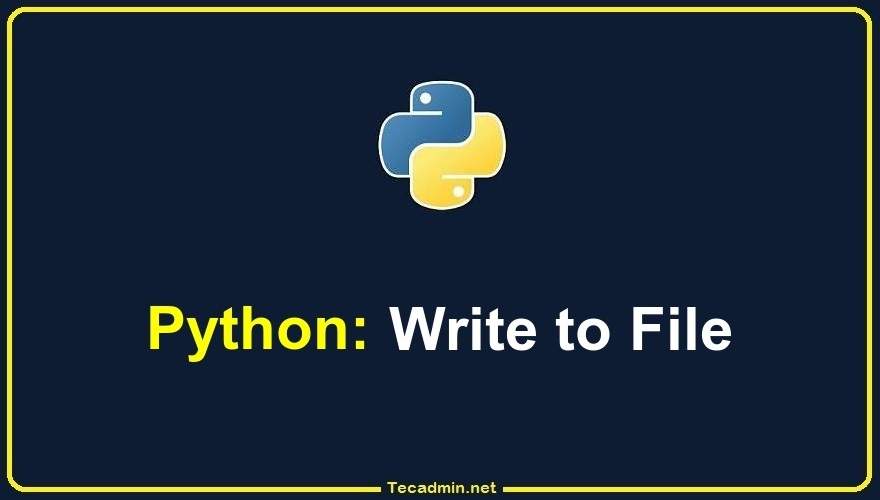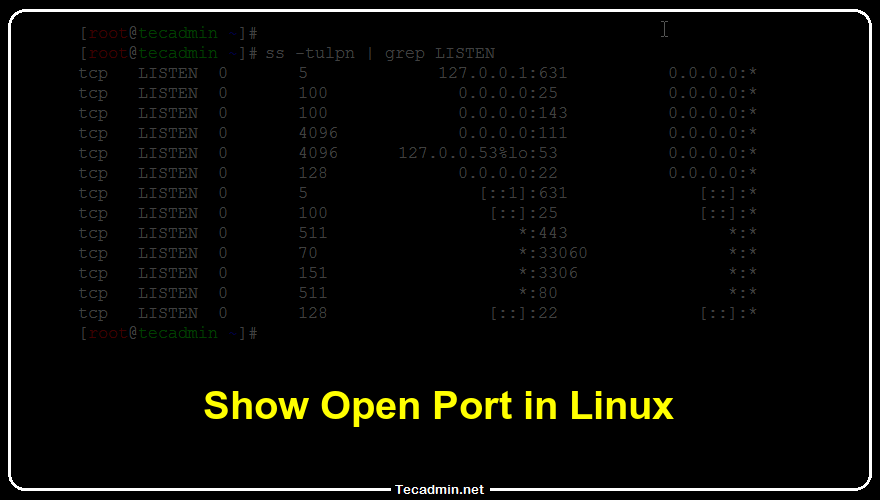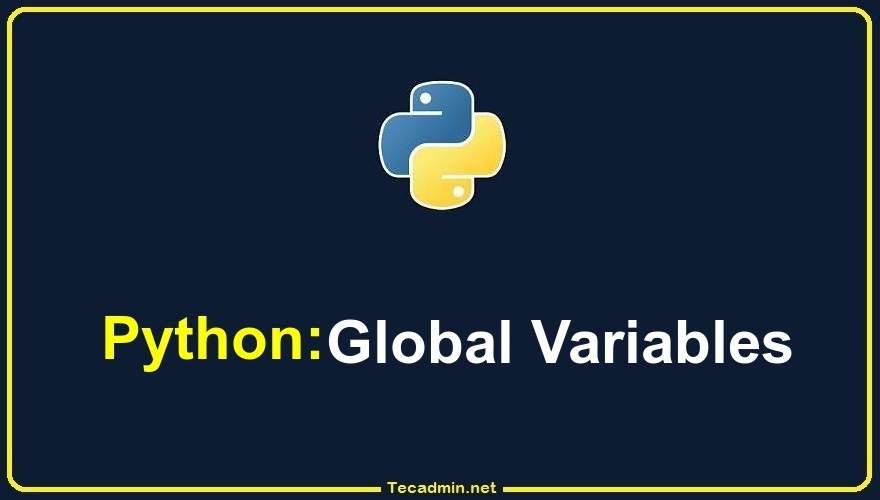Writing to a file in Python is a common operation that allows you to store data in a file for later use. Whether you are working with a simple text file or a more complex binary file, Python provides a number of ways to write data to a file. In this article we will discuss the following methods for writing files in Python: write() method writelines() method bytes() method print() method Let’s discuss each method one by one. 1. Using `write()` method One of the simplest ways to write to a file in Python is using the `write()` method of…
Author: Rahul
In Linux, a port is a logical connection point for transmitting data between a client and a server. To ensure the security and functionality of a system, it is important to know which ports are open and listening for incoming connections. Ports are identified by a number, ranging from 0 to 65535. There are three categories of ports in a Linux system: Well-known ports: These are the ports that are reserved for specific services and are assigned by the Internet Assigned Numbers Authority (IANA). Some examples of well-known ports are 22 for SSH, 80 for HTTP, and 443 for HTTPS.…
In Python, a global variable is a variable that is defined outside of any function or class and can be accessed from anywhere within the code. Global variables are useful for storing values that need to be shared across different parts of the program, such as configuration options or flags. Here are some key points about global variable visibility in Python: Global variables are defined outside of functions or classes and can be accessed from anywhere in your code. You can access global variables using the `global` keyword, but it is generally considered good practice to avoid using global variables…
In Python, a function is a block of code that performs a specific task and can be called from other parts of your program. Functions are an essential part of Python programming, and they allow you to write reusable, modular code that is easier to maintain and debug. In this tutorial, we will learn how to call a function in Python. We will discuss the different ways you can pass arguments to a function, and we will also look at some common mistakes to avoid when calling functions in Python. Calling function in Python In Python, you can call a…
To append to a file means to add new content to the end of an existing file, rather than overwriting the file’s existing content. When you append to a file, the new content is added to the end of the file, and the file’s original content is not modified or deleted. This can be useful when you want to add additional information to a file without losing the existing data. In Bash, there are several ways to append data to the end of a file. Here are two common methods that you can use: Method 1: Using the “echo” command…
Getting the current date and time is a common task in Python programming. There are several ways to do this, depending on your needs and the libraries you have available. In this article, we will explore some of the most common methods for getting the current date and time in Python, including using the built-in datetime module, the time module, and the dateutil module. We will also discuss how to format the date and time values as strings, and how to convert between timezones. Whether you are working with timestamps, scheduling tasks, or just want to display the current date…
MongoDB is a popular NoSQL database that is widely used for storing and manipulating large amounts of data. It is known for its flexibility, scalability, and performance, making it a great choice for a variety of applications. In this article, we will look at how to connect to a MongoDB database in Python using the `pymongo` library, which is a MongoDB driver for Python. We will also cover some basic operations such as inserting data, querying the database, and updating documents. Prerequisites Before we begin, you will need to install the following: Python 3: You can download and install Python…
Google Chrome is a popular web browser that is widely used for accessing the internet. It is known for its fast performance, security features, and support for a wide range of web technologies. If you want to use Google Chrome on your Ubuntu or Debian system, you can install it using the steps described in this article. There are two methods for installing Google Chrome on Ubuntu and Debian: using the official Google Chrome repository and downloading the Debian package from the Google Chrome website. In this article, we will cover both methods. Method 1: Downloading the Debian Package from…
In computer networking, the term “localhost” refers to the current device used to access it. It is used to access the network services that are running on the host via the loopback network interface. Using the loopback interface bypasses any local network interface hardware. The term “localhost” is derived from the combination of the words “local” and “host”. The word “local” refers to the device itself, while the word “host” refers to the device hosting a service or application. Therefore, “localhost” literally means “the local host.” In most cases, localhost is used to access the network services that are running…
OpenCV (Open Source Computer Vision) is a free and open-source library of computer vision and machine learning algorithms that can be used to process and analyze images and video. It is widely used in a variety of applications, including object detection, image, and video processing, and augmented reality. In this article, we will cover two different methods for installing OpenCV in Python: using “PIP” (the Python Package Manager) and using “Anaconda” (a free and open-source distribution of Python and R for data science and machine learning). Method 1: Installing OpenCV using PIP PIP is the default package manager for Python.…




